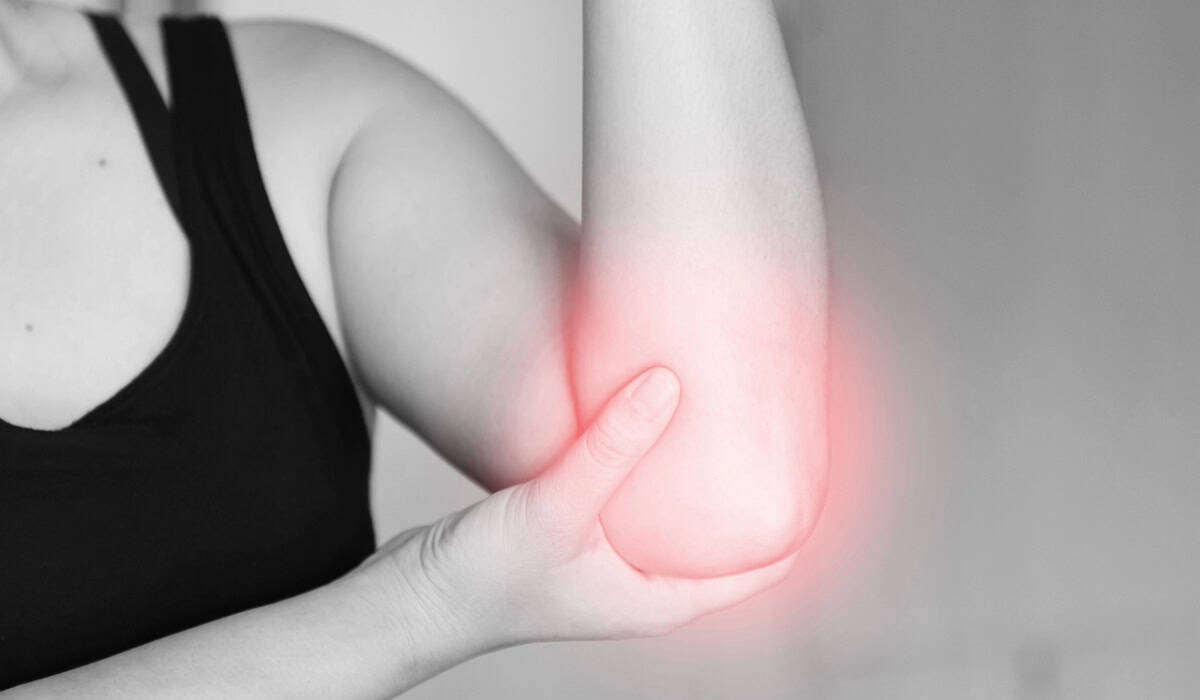Causes Symptoms and Treatment Options – A Comprehensive Guide
Osteoarthritis is a condition that affects millions, causing joint pain and stiffness that can interfere with daily activities. This guide is designed to provide you with a comprehensive understanding of osteoarthritis, including its causes, symptoms, and the available treatment options. From physical therapy aimed at reducing pain and restoring mobility to the possibility of joint replacement surgery for severely affected joints, treatment is multifaceted. The goal is to manage symptoms effectively and maintain quality of life.
Understanding the risk factors, such as age, gender, and obesity, can help in taking preventive measures. Whether it’s through weight management to alleviate the extra stress on your joints or engaging in regular physical activity to keep them flexible, there are steps you can take to relieve symptoms and possibly slow the progression of the disease. This guide will navigate you through identifying symptoms, exploring treatment strategies including medications, physical therapy, and surgery, and suggesting lifestyle modifications.
The Basics of Osteoarthritis
Osteoarthritis occurs when the bones rub together due to the wearing down of the protective cushion between them. A combination of treatments is often required to manage the condition effectively.
What Is Osteoarthritis?
This condition involves the degradation of joint cartilage, leading to bones rubbing against each other. Managing it usually requires a combination of treatments.
The Definition and Overview
Osteoarthritis is characterized by the breakdown of cartilage, the shock absorber in the affected joints, leading to bones rubbing together. This can result in pain, stiffness, and other symptoms. Primary osteoarthritis, the most common form, occurs due to the natural aging process and wear and tear on the joints.
Types of Osteoarthritis
Primary osteoarthritis is the type that most people are familiar with, resulting from the aging process and the general wear and tear on the joints over time.
Who Is at Risk?
Those more likely to develop osteoarthritis include individuals who are overweight, have experienced significant weight gain, or have family members with the condition.
Age and Gender Considerations
As you age, the risk of developing osteoarthritis increases, especially in joints that have been heavily used or injured over the years. Both men and women are affected, though it’s more common in women after menopause.
Obesity’s Role in Osteoarthritis
Excess weight puts additional stress on weight-bearing joints, leading to increased wear and tear. Managing weight through diet and exercise can be an effective combination of treatments to reduce the risk.
Identifying Osteoarthritis: Symptoms and Causes
Recognizing symptoms of osteoarthritis early, understanding the risk factors, and knowing the different forms of arthritis, including inflammatory arthritis and primary osteoarthritis, can help in managing the condition effectively.
Recognizing Osteoarthritis Symptoms
Common symptoms of osteoarthritis include joint pain and stiffness, which can affect the hip joint, finger joints, and lead to conditions like spinal stenosis. You may also notice a joint deformity as the disease progresses.
Unpacking the Causes of Osteoarthritis
Osteoarthritis can be caused by a variety of factors, including inflammatory arthritis, joint injury, and being overweight or obese. Secondary osteoarthritis and osteoarthritis of the spine are specific forms where the causes can vary, from genetic predispositions to the impact of excess weight adding stress to the joints.
Joint Injury and Abnormalities
Injuries to the joints can increase the chances of developing osteoarthritis. Whether it’s from sports, work-related activities, or accidents, any damage to the joint can accelerate the wear and tear process.
Genetic Factors and Other Joint Diseases
Genetics play a significant role in the development of osteoarthritis. If your family members have had the condition, your risk is higher. Other joint diseases can also predispose individuals to develop osteoarthritis.
The Path to Diagnosis
To diagnose osteoarthritis, healthcare providers rely on a combination of blood tests, imaging tests, and a thorough physical examination to look for signs of joint instability and confirm the diagnosis.
How Osteoarthritis Is Diagnosed
Imaging tests and a physical examination are key to diagnose osteoarthritis. These tools help doctors see the condition of your joints and confirm the diagnosis accurately.
Essential Tests for Osteoarthritis Diagnosis
When your doctor thinks you might have osteoarthritis, they will not only talk to you and check how your joints move but also might use some tests to be sure. One common set of tests they use is blood tests. These tests help rule out other causes of joint pain, like rheumatoid arthritis. Even though these blood tests can’t directly say you have osteoarthritis, they are important in making sure your doctor understands what’s causing your joint issues. This way, they can give you the right help to feel better.
When to Consult a Specialist
If your everyday activities become hard because of joint pain, or if your job needs tasks that are now difficult due to pain, it might be time to see a specialist. Specialists in occupational therapy can help make daily tasks easier. They work with you to find ways to reduce pain and improve your ability to do tasks at home and work. Consulting a specialist can provide you with personalized strategies and support for managing your symptoms.
Osteoarthritis Treatment Strategies
Treatment options for osteoarthritis focus on reducing pain, improving joint function, and minimizing the impact on daily activities. Physical therapy, medications, and, in some cases, joint replacement surgery are part of the treatment plan. Research shows that a combination of treatments often yields the best results in managing symptoms and helping to restore mobility.
Mainstream Medical Treatments
For the pain and inflammation in affected joints, doctors often prescribe pain relievers as the first line of treatments for osteoarthritis. These medications can help reduce discomfort and improve quality of life for those living with this condition. It’s essential to follow your healthcare provider’s advice on the right medication and dosage for your situation.
Medications: NSAIDs and Beyond
NSAIDs, or non-steroidal anti-inflammatory drugs, are commonly used to manage the pain and inflammation associated with osteoarthritis. However, for those who need additional relief, doctors may prescribe stronger pain relievers or recommend other medications to target specific symptoms. The goal is to find the most effective combination that offers relief while minimizing side effects.
The Role of Surgery in Management
In cases where medications and other non-surgical treatments aren’t enough to relieve symptoms, surgery might be considered. Procedures like joint replacement surgery can significantly reduce pain and improve mobility in severely affected joints. The decision to undergo surgery depends on several factors, including the severity of the symptoms, the affected joint, and the overall health of the individual.
Physical Therapy and Exercises
Engaging in regular exercise can significantly reduce the risk of osteoarthritis progressing and worsening. Physical therapy is tailored to strengthen the muscles around the joints, which can help to support and protect those areas from further damage. It’s a crucial part of managing osteoarthritis effectively.
Strengthening and Aerobic Exercises
Strengthening exercises are designed to build the muscles around the joints, providing them with better support and reducing stress on the joint itself. Aerobic exercises, like walking or swimming, help improve overall fitness and can reduce the risk of weight gain, which puts extra pressure on the joints. A balanced routine combining both types of exercise is most beneficial for managing osteoarthritis.
Range of Movement Exercises
Range of movement exercises help maintain or improve the flexibility of your joints. These exercises involve gently moving the joints as far as they can go in all directions. Doing these regularly can help keep your joints functioning well and may reduce stiffness and pain.
Alternative and Complementary Therapies
In addition to mainstream treatments, some people find relief from alternative and complementary therapies. These may include acupuncture, massage, or using supplements that target joint health. It’s important to discuss these options with your healthcare provider to ensure they’re safe and potentially beneficial for your specific needs.
Supplements and Complementary Treatments
Supplements like glucosamine and chondroitin are often used to manage symptoms of osteoarthritis, especially in the soft tissues around the joints. While the effectiveness of these supplements can vary from person to person, some find them helpful in reducing pain and improving mobility. Always consult with your healthcare provider before starting any new supplement regimen.
Transcutaneous Electrical Nerve Stimulation (TENS) and Hyaluronic Acid Injections
TENS therapy uses low-voltage electric currents to relieve pain, while hyaluronic acid injections aim to lubricate the joint, making movement smoother and less painful. Both treatments can be effective for managing osteoarthritis pain, especially when combined with other therapies. Discussing these options with your healthcare provider can help determine if they’re right for you.
Managing Life with Osteoarthritis
Living with osteoarthritis means making adjustments to manage your symptoms and maintain your quality of life. Although there’s no cure for osteoarthritis, a combination of treatment options can help manage the condition effectively. It’s important to stay active, manage your weight, and use medications or therapies as recommended by your healthcare provider.
Lifestyle Modifications for Better Living
When living with osteoarthritis, small changes in your daily life can make a big difference. Treatment options and lifestyle adjustments tailored to how your joints are affected can significantly reduce pain and improve your ability to perform daily tasks. Regular consultations with your healthcare provider can help you find the best osteoarthritis treatment plan for your needs.
Weight Management and Diet
Maintaining a healthy weight and eating a balanced diet are crucial for managing osteoarthritis. Extra weight puts additional pressure on your joints, worsening pain and mobility issues. A diet rich in fruits, vegetables, and lean proteins can help reduce inflammation and support joint health.
Effective Pain Management Techniques
Managing pain is a critical aspect of living well with osteoarthritis. Techniques such as heat and cold therapy, mindful meditation, and regular physical activity can help control pain levels. It’s also important to stay engaged in activities you enjoy, which can help distract from pain and improve your overall well-being.
Adaptations at Home and Work
When joints are affected by osteoarthritis, moving around can become harder. You might need to make some changes both at home and work to help you stay active and safe. Things like raising your chair height or using tools with easy grips can make a big difference. It’s all about keeping you comfortable while you do your daily tasks.
Navigating Public Transport
Using public transport can be a challenge when you have osteoarthritis. But with some planning, it can be made easier. Try to travel during less busy times if you can. Look for seats meant for those who need them more, and don’t be shy to ask for one. Carrying a cane or a foldable stool can also give you something to lean on while you wait.
Utilizing Walking Aids and Other Supports
Walking aids like canes or walkers can be very helpful if your osteoarthritis affects your mobility. They can give you the extra support you need to stay balanced and move around more easily. Braces or shoe inserts can also help support your joints and reduce pain. Talk to your doctor about what aids or supports can help you the most.
Prevention and Proactive Care
Taking steps to prevent osteoarthritis involves staying active and maintaining a healthy weight. Regular exercise strengthens the muscles around your joints, which helps take some of the pressure off them. Eating a balanced diet can also help you manage your weight, reducing the stress on your joints. Remember, it’s about keeping your joints healthy for as long as possible.
Preventing Osteoarthritis
A combination of treatments can help manage osteoarthritis. This might include exercises, weight control, and sometimes medications or surgery. The goal is to reduce pain and keep you moving.
Importance of Physical Activity and Proper Posture
Staying active and practicing good posture are key to preventing joint damage from osteoarthritis. Activities like walking, swimming, or cycling can keep your joints flexible and strong. And sitting or standing straight can protect your joints from extra stress. Start slowly and build up your activity level gradually to keep your joints healthy.
Protective Measures Against Joint Injury
To lower your risk of joint injury, and therefore osteoarthritis, always use the proper equipment and techniques when playing sports or exercising. If your job involves heavy lifting, learn the correct way to lift and carry heavy items to avoid putting too much strain on your joints. Wearing the right shoes can also protect your joints from unnecessary stress.
The Outlook and Future of Osteoarthritis Care
The future of osteoarthritis care looks promising with ongoing research and new treatments being developed. Scientists are working on ways to better understand this condition and find more effective ways to treat it. With continued advancements, the hope is for individuals to enjoy better quality of life despite having osteoarthritis.
Understanding Prognosis and Outlook
The outlook for people with osteoarthritis varies. Some may experience only mild symptoms, while others may have severe symptoms that affect their daily lives. The key is early diagnosis and treatment to manage the pain and other symptoms. With the right care, many people can live a full and active life.
Research, Innovations, and Emerging Treatments
Exciting research into osteoarthritis is looking at ways to repair joint damage, reduce joint inflammation, and restore damaged cartilage. Scientists are also exploring treatments for conditions like psoriatic arthritis, which is related to osteoarthritis. These advancements could offer new hope for those living with osteoarthritis in the future.
Additional Insights and Resources
Finding reliable information and support can make living with osteoarthritis easier. There are many resources available to help you understand your condition and manage it effectively.
Addressing Common Questions About Osteoarthritis
Many people wonder about the best ways to manage severe pain caused by osteoarthritis. It’s estimated that over 5 million people are looking for effective solutions to this challenge.
At What Age Does Osteoarthritis Typically Start?
Osteoarthritis can start at different ages, but it’s most common in people over 50. However, younger people can get it too, especially if they have joint injuries or are overweight.
How Diet and Weather Affect Osteoarthritis
What you eat and the weather can both impact how osteoarthritis affects you. Eating a healthy diet can reduce inflammation, while cold and damp weather might make your joints feel stiffer and more painful. Keeping warm and eating foods that fight inflammation can help you feel better.
Useful Resources for Further Information
For those looking to dive deeper into understanding and managing osteoarthritis, several resources stand out. The Arthritis Foundation offers comprehensive guides and the latest research on osteoarthritis treatment and management. Websites like WebMD and the Mayo Clinic provide easy-to-understand information on symptoms, causes, and treatments. For peer support, online forums such as PatientsLikeMe can connect you with others experiencing osteoarthritis, sharing tips and personal stories to help manage daily life.
Personal Stories and Experiences
Exploring personal stories of living with osteoarthritis offers unique insights and hope. Individuals from all walks of life share their journeys, revealing the challenges they’ve faced and the strategies that have helped them maintain mobility and reduce pain. These narratives underscore the importance of resilience, personalized care, and the supportive role of communities in navigating the complexities of osteoarthritis.
Living Well with Osteoarthritis
Finding joy and mobility despite osteoarthritis is possible, as many have shown.
Mel’s Journey: Swimming for Mobility
Mel discovered that swimming was not just a form of exercise but a lifeline to maintaining mobility and managing pain from knee osteoarthritis. The buoyancy of water reduced the strain on her joints, allowing her to perform movements that were otherwise painful on land. This physical activity, coupled with the soothing effect of water, became a cornerstone of her treatment plan, showcasing the power of tailored exercise regimens in managing osteoarthritis symptoms.
Charles’ Success Story: Managing Osteoarthritis
Charles’ journey with osteoarthritis is a testament to proactive management and adaptation. After knee replacement surgery, he embraced a combination of strength training and flexibility exercises to combat muscle weakness and maintain joint function. His commitment to a healthy lifestyle, including maintaining a proper body weight and managing glucose levels, played a crucial role in slowing the progression of his condition and enhancing his quality of life.
Wrapping It Up: Embracing Life with Osteoarthritis
Osteoarthritis doesn’t have to dictate the quality of your life. With the right information, treatment options, and support, living well with osteoarthritis is achievable. Embracing a comprehensive care approach that includes medication, physical therapy, and lifestyle modifications can mitigate symptoms and maintain mobility. Remember, you’re not alone in this journey. Engaging with healthcare providers, support groups, and utilizing resources can empower you to lead a fulfilling life despite osteoarthritis.
The Importance of Comprehensive Care
Comprehensive care is key to enhancing daily life for those with osteoarthritis.
The Role of Healthcare Providers in Osteoarthritis Management
Healthcare providers play a pivotal role in osteoarthritis management by offering a range of treatment options tailored to individual needs. From diagnosing the condition to crafting a personalized osteoarthritis treatment plan, their expertise is invaluable. They guide patients through the maze of medications, physical therapies, and surgical options, ensuring that each person receives the most effective combination of treatments to manage symptoms and improve quality of life.
Asking the Right Questions for Optimal Care
Engaging in open and informed conversations with your healthcare provider can significantly impact your osteoarthritis management. Asking about the benefits and risks of different treatment options, potential side effects of medications, and any alternative therapies can help you make informed decisions. Inquiring about lifestyle changes that may alleviate symptoms, such as diet and exercise recommendations, can also be beneficial. Remember, the goal is to develop a treatment plan that aligns with your personal health goals and lifestyle.







